Mapping systemic lupus erythematosus heterogeneity at the single-cell level
- PMID: 32747814
- PMCID: PMC7442743
- DOI: 10.1038/s41590-020-0743-0
Mapping systemic lupus erythematosus heterogeneity at the single-cell level
Abstract
Patients with systemic lupus erythematosus (SLE) display a complex blood transcriptome whose cellular origin is poorly resolved. Using single-cell RNA sequencing, we profiled ~276,000 peripheral blood mononuclear cells from 33 children with SLE with different degrees of disease activity and 11 matched controls. Increased expression of interferon-stimulated genes (ISGs) distinguished cells from children with SLE from healthy control cells. The high ISG expression signature (ISGhi) derived from a small number of transcriptionally defined subpopulations within major cell types, including monocytes, CD4+ and CD8+ T cells, natural killer cells, conventional and plasmacytoid dendritic cells, B cells and especially plasma cells. Expansion of unique subpopulations enriched in ISGs and/or in monogenic lupus-associated genes classified patients with the highest disease activity. Profiling of ~82,000 single peripheral blood mononuclear cells from adults with SLE confirmed the expansion of similar subpopulations in patients with the highest disease activity. This study lays the groundwork for resolving the origin of the SLE transcriptional signatures and the disease heterogeneity towards precision medicine applications.
Conflict of interest statement
COMPETING INTERESTS STATEMENT
V.P. has acted as consultant for Sanofi and Astra Zeneca and is the recipient of a research award from Sanofi. J.F.B. is a member of the BOD and SAB of Neovacs.
Figures
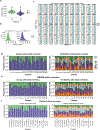
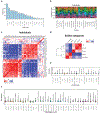
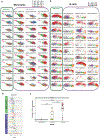


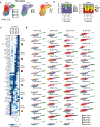



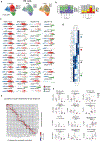

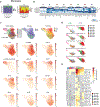






References
-
- Arbuckle MR et al. Development of autoantibodies before the clinical onset of systemic lupus erythematosus. N. Engl. J. Med 349, 1526–1533 (2003). - PubMed
-
- Elkon KB & Wiedeman A Type I IFN system in the development and manifestations of SLE: Current Opinion in Rheumatology 24, 499–505 (2012). - PubMed
-
- Tsokos GC Systemic lupus erythematosus. N. Engl. J. Med 365, 2110–2121 (2011). - PubMed
-
- Navarra SV et al. Efficacy and safety of belimumab in patients with active systemic lupus erythematosus: a randomised, placebo-controlled, phase 3 trial. The Lancet 377, 721–731 (2011). - PubMed
Publication types
MeSH terms
Substances
Grants and funding
LinkOut - more resources
Full Text Sources
Other Literature Sources
Medical
Molecular Biology Databases
Research Materials

